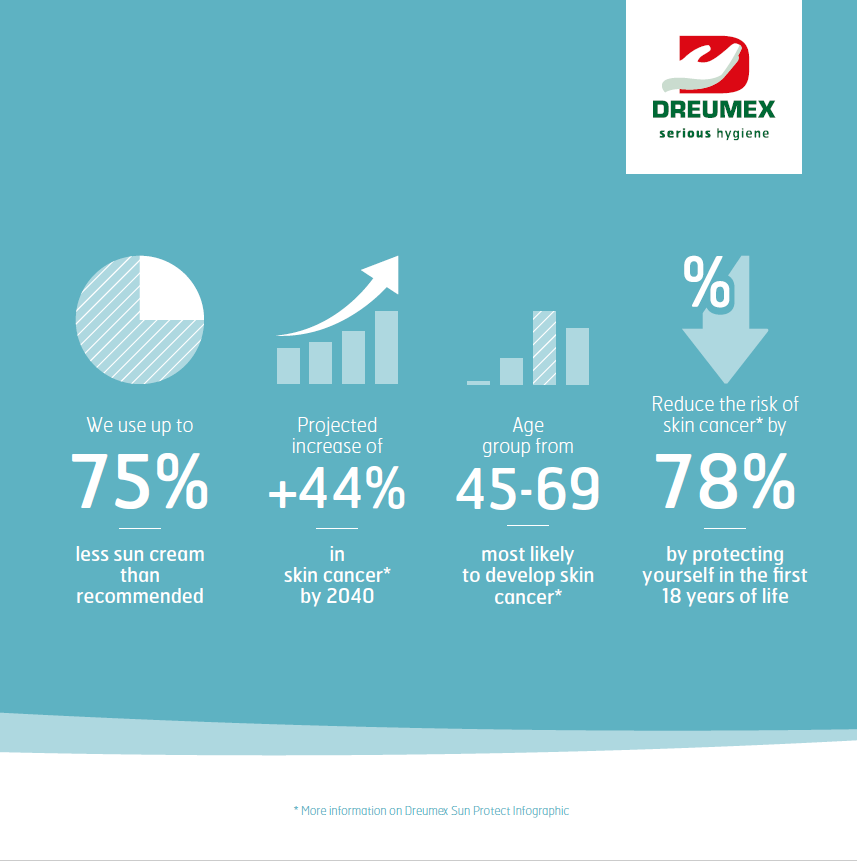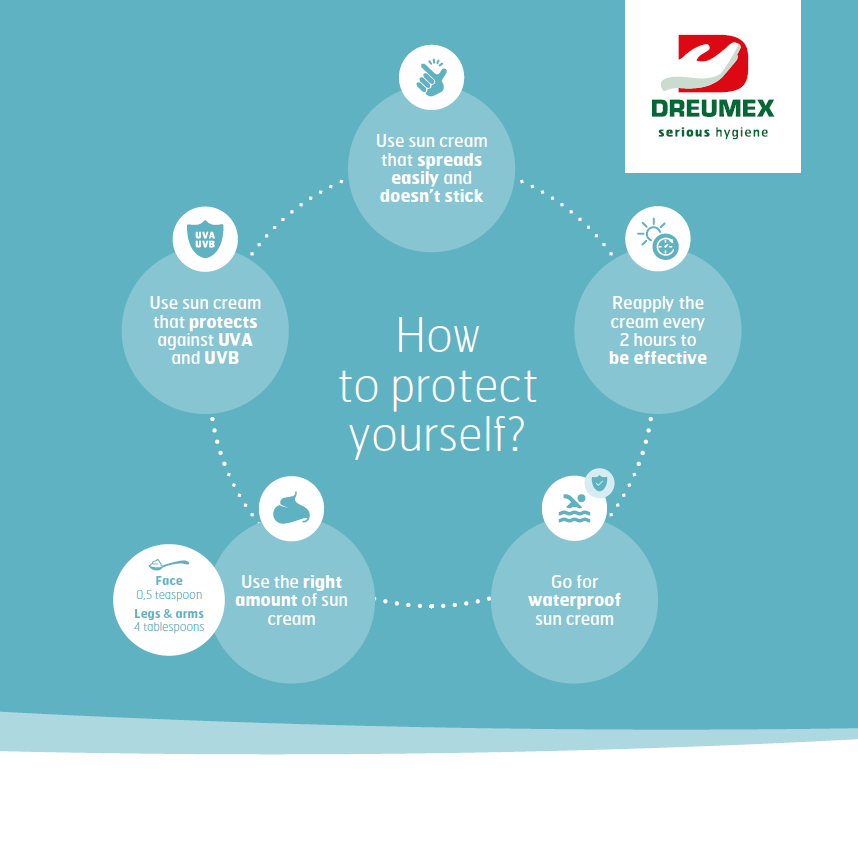Outdoor workers 77% more likely to get skin cancer
Over 7 million Europeans are estimated to have skin cancer and in the majority of cases, skin cancer was preventable. In addition, outdoor workers are more at risk, as much as 77%, because working outside exposes them a lot to the sun and the harmful effects that UVA and UVB radiation can have. This again underlines the importance of correctly applying sun cream for professionals and paying attention to this.
Europe has more than 14.5 million active outdoor workers. This means that they spend at least 75% of their working time outdoors. Given the additional risk for outdoor workers, it is important to pay attention to occupational sun exposure and identify skin cancer risks.
Despite this fact not being new, research by Dr Jetske Ultee shows that on average people apply up to 75% less sun cream than advised. The number of people getting skin cancer is expected to rise by 44% by 2040. The group at highest risk are people aged between 45 and 69.

Some terms explained in more detail
Terms like UVA and SPF are mentioned on packaging, but what do they actually mean? We have listed it for you.
UV-radiation
Sunlight consists partly of UV radiation. UV means Ultraviolet. UV radiation consists of UVA (95%) and UVB rays (5%).
UVA radiation: does not burn the skin, but its longer rays penetrate deeper into the skin and cause skin ageing, among other things.
UVB radiation: UVB prompts the skin to produce vitamin D and causes the skin to tan. Too much UVB can cause the skin to burn due to its shorter wavelengths.
Although UVA and UVB rays differ in the way they affect the skin, they both cause damage. Therefore, when choosing a sunscreen, it is important to check whether the product contains both a UVA and UVB filter.
SPF
SPF stands for Sun Protection Factor. This is a protection factor for the skin against harmful UV rays. The higher the factor, the more UVB radiation is blocked. At SPF50, over 98% of this radiation is blocked . The advice for outdoor workers is that it is best to apply sunscreen with SPF50.
Tips for optimal protection:

- Use the right amount of sun cream (2mg/cm2): half a teaspoon for the face and four tablespoons for arms and legs [5].
- Reapply sunscreen every two hours. Sunscreen that provides all-day protection is in fact impossible. This is also no longer allowed to be claimed in Europe, as the degree of protection depends on your skin and activities [6].
- Use a sunscreen that protects against both UVA and UVB [7].
- Protect skin with SPF50+.
- Skin cancer is most common on the head and neck. These are also the parts of the body that come into contact with the sun the most [8]. So grease these body parts well.
- When the sun is overcast, its strength is still half that of clear skies. So your skin needs protection even when it is overcast [9].
- Make it easy for outdoor workers and, as an employer, offer sunscreen that is easy to spread, non-sticky and waterproof.
Dreumex Sun Protect
Dreumex Sun Protect SPF50+ has been specially developed for professionals. The handy bottle is easy to take with you from project to project, so you can protect yourself from UV rays anytime, anywhere. Because it's important to reapply every 2 hours! Read more about Dreumex Sun Protect here.
Sources:
[1] Source: https://eadvsymposium2022.org/
[2] Source: ECPC Non-melonoma skin cancer as an occupational disase fact sheet for policy makers
[3] Source: Skincancer foundation – UV Radiation & Your Skin
[4] Source: CeraVe – What SPF Should I Use for Protection Against UVA and UVB Rays?
[5] Source: kin Cancer Foundation – Ask the Expert: How Much Sunscreen Should I be Using on My Face & Body? & Dr. Jetske Ultee – Voorlichting zonbescherming
[6] Source: COSLaw.eu – Sunscreen products and claims: a guidance to the EU regulatory framework
[7] Source: Skin Cancer Foundation – All About Sunscreen
[8] Source: SkinVision – Where is skin cancer most common on the body?
[9] Source: Arboportaal – Buiten werken: Zon en huid (Ministerie van Sociale Zaken en Werkgelegenheid)

